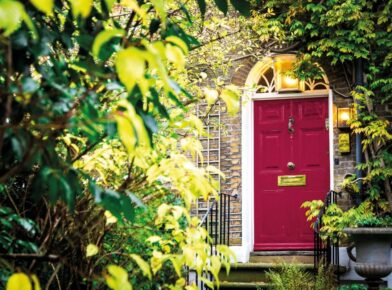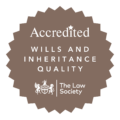What is BNG?
Biodiversity Net Gain (or BNG as it is commonly known) is an approach which developers are mandated to take when considering a new project. The aim is to encourage developers to assess the impact of the development on biodiversity and to have them suggest means for building biodiversity back into their development, resulting in a net gain of at least 10%.
Through the Town and Country Planning Act 1990 and its subsequent amendment by the Environment Act 2021 and other supplemental orders and regulations, the government has mandated that this approach be adopted in all new planning applications by all except small-scale developers from 1 January 2024. Small-scale development must comply with the regulations from 2 April 2024. B P Collins’ property team explores the impact for developers in the sector.
Will it change the planning application?
BNG has already commenced for most planning permissions granted in respect to an application made on or after 12 February 2024.
Biodiversity gain conditions apply to every grant of planning permission in England with the exception of the following:
- where development does not impact any onsite priority habitat;
- where 25 square meters of habitat that has a biodiversity value greater than zero but less than five meters in length of linear habitat;
- temporary exemption for a non-major development, which will continue to apply past 2 April 2024 where the original permission was subject to this temporary exemption;
- development which granted planning permission by a development order under section 59;
- self-build and custom build development which consists of no more than 9 dwellings and carried out on a site which has an area no larger than 0.5 hectares and consists exclusively of dwellings as defined in s1(A1) of the Self-build and Custom Housebuilding Act 2015;
- urgent Crown development which granted permission under section 293A of the Town and Country Planning Act 1990;
- development of a biodiversity gain site (e.g mainly focused on fulfilling biodiversity gain conditions in relation to another development);
- development relating to the high-speed railway transport network; or
- householder development (further detailed below) as defined within Article 2(1) of the Town and Country Planning (Development Management Procedure) (England) Order 2015.
For most homeowners who are looking to obtain planning permission in respect of their home, such as a loft conversion or extension works, there will be no impact. Such developments are excluded from BNG conditions. The current householder planning application form already includes a statement to this effect and there are no concrete proposals to amend this position. Similar statements can also be added to any development where the biodiversity gain conditions are not met, as permitted by the de minimis exemption. Please refer to The Biodiversity Gain Requirements (Exemptions) Regulations 2024 and government guidance for further information regarding the exemptions.
However, where a development will engage the biodiversity gain conditions, the application for planning permission must include the information required by law before development can lawfully commence. Failure to meet these criteria will result in an automatic rejection of the application. It must therefore include:
- a statement as to whether the applicant believes that planning permission, if granted, would be subject to the biodiversity gain condition;
- the pre-development biodiversity value of the onsite habitat on the date of application (or an earlier date) including the completed metric calculation tool used showing the calculations, the publication date and version of the biodiversity metric used to calculate that value;
- where the applicant wishes to use an earlier date, the proposed earlier date and the reasons for proposing that date;
- a statement confirming whether the biodiversity value of the onsite habitat is lower on the date of application (or an earlier date) because of the carrying on of activities (‘degradation’), in which case the value is to be taken as immediately before the carrying on of the activities, and if degradation has taken place, supporting evidence of this;
- a description of any irreplaceable habitat (as set out in column 1 of the Schedule to the Biodiversity Gain Requirements (Irreplaceable Habitat) Regulations 2024) on the land to which the application relates, that exists on the date of application, (or an earlier date); and
- a plan, drawn to an identified scale which must show the direction of north, showing onsite habitat existing on the date of application (or an earlier date), including any irreplaceable habitat.
Article 7
The Town and Country Planning
(Development Management Procedure)
(England) Order 2015
Meeting these requirements will likely involve the consultation of an expert in BNG who can guide developers on how to describe irreplaceable habitat, calculate using a biodiversity metric and formulate plans which are acceptable to the local authority to mitigate any loss of biodiversity. Additionally, where relevant, additional information can also be required to ensure that the plans are environmentally sufficient. Guidance suggests that applicants should also consult with their local planning authority before submitting any such application.
Will it affect the value of my property?
For most homeowners, the BNG frameworks will not impact related developments and therefore will not have much impact on price.
We are yet to see the impact of the framework on sites which are to be used for development, since the complexity and cost of complying with BNG requirements cannot yet be fully understood. There is potential that the increased regulation will put negative pressure on the value of brownfield sites or sites with significantly biodiverse habitats, since any planned development will cost the developer more. However, the extent to which these costs will be absorbed by developers is yet to be seen.
What if I commence development without approval of the Biodiversity Gain Plan from the local authority?
Commencing development without complying with the biodiversity gain condition is a breach of planning control. This will result in the local planning authority taking a wide range of enforcement action including possibly issuing an injunction over further development.
Want to learn more?
DEFRA (the Department for Environment, Food and Rural Affairs) published a guidance collection on how BNG would be enforced through planning application, as well as draft regulations which it aims to be implemented alongside the legislation to aid enforcement and compliance.
To supplement this, the Department for Levelling-up, Housing and Communities and the Planning Advisory Service both published BNG planning practice guidance, which is aimed at assisting applicants in drafting applications that are considerate of their ecological impact on the first submission and make appropriate steps to facilitate a BNG from all developments.
If you have any questions about the new legislation or wish to speak to a member of our property team about a site you are planning to develop or purchase with development in mind, please contact enquiries@bpcollins.co.uk or call our reception on 01753 889995.


















